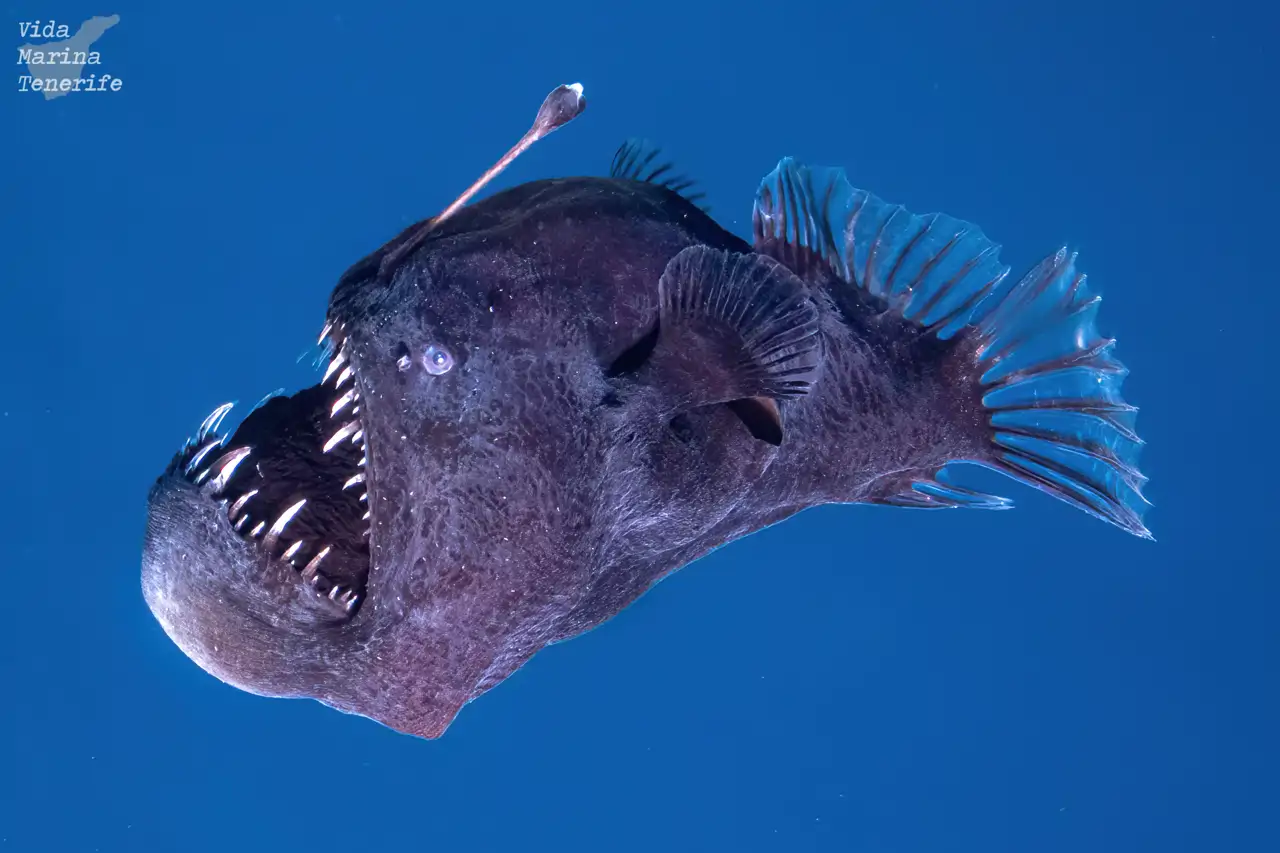
National Geographic, Feb 17. - Everything that is unknown generates a series of mixed feelings that usually mix curiosity and fear even though, many times, we have absolutely nothing to fear. This defines exactly what happened on this occasion with the black devil specimen found unexpectedly near the coast of Tenerife, in surface waters.
An aura of mystery surrounds this species because it lives in the depths of the ocean and, therefore, is not easy to see. Its appearance, which includes characteristics adapted so that it can live in absolute darkness, is very unusual for us. However, and as a result of this discovery, many have discovered that the black devil is not as dangerous or terrifying as they had imagined.
The controversy over its size
A black devil or abyssal anglerfish (Melanocetus johnsonii) was recently found alive in the Canary Islands by the team from the NGO Condrik-Tenerife, made up of marine biology specialists Laia Valor, Antonio Sabuco, Marc Martín and the photographer specialising in marine fauna David Jara, with whom we were able to speak from National Geographic Spain to find out more about their amazing discovery.
A short while after the sighting, the specimen died and was transported to the Museum of Nature and Archaeology (MUNA) in Santa Cruz de Tenerife so that it could be studied by specialists in deep-sea species. The news of its death is unfortunate, but nevertheless it opens up an unparalleled scientific opportunity to further investigate this enigmatic species.
Since then, new images of this fish have been released that have surprised the world, in which the collected specimen apparently barely measured a few centimeters and would fit in the palm of a hand. This dimension, of course, contrasts with its terrifying appearance.
But the reality is that, contrary to what many of us may have imagined, Melanocetus johnsonii is not a species that reaches extraordinarily large sizes: it was only in the Pixar film Finding Nemo (2003), in proportion to the small volume of Marlin, a clownfish, and Dory, a blue surgeonfish.
On average, most species of anglerfish in the abyssal zone measure about 15 centimetres, and the females are usually considerably larger than the males. In fact, they not only have substantial differences in size but also in their functions: the males parasitize the organism of the females and feed through them in exchange for producing sperm.
How does it survive in the abyssal zone?
The black devil thrives at between 2,000 and 4,000 metres deep, in the abyssal zone, one of the deepest points in the ocean, where sunlight does not reach. For this reason, all of its physical characteristics have evolved to adapt to this extreme, cold and dark environment.
Its eyes are very small, as it barely needs them; its skin is hydrodynamic so that it can swim at high speeds; it has open jaws full of sharp fangs so that it can hunt organisms that fall into its area from greater depths; and it uses a bioluminescent lure in the form of an antenna to attract its prey.
It is a predatory animal, but it is not dangerous for humans and, in addition, the chances of us coming across a specimen of this species are minimal. Despite the speed of its swimming, its hunting strategy consists of maintaining its position by moving as little as possible and waiting for its brightness to act as a lure, ambushing its prey. The ability to remain completely still without sinking into the ocean water also allows it to pass for dead to potential predators who are lurking. (Text and Photo: National Geographic)